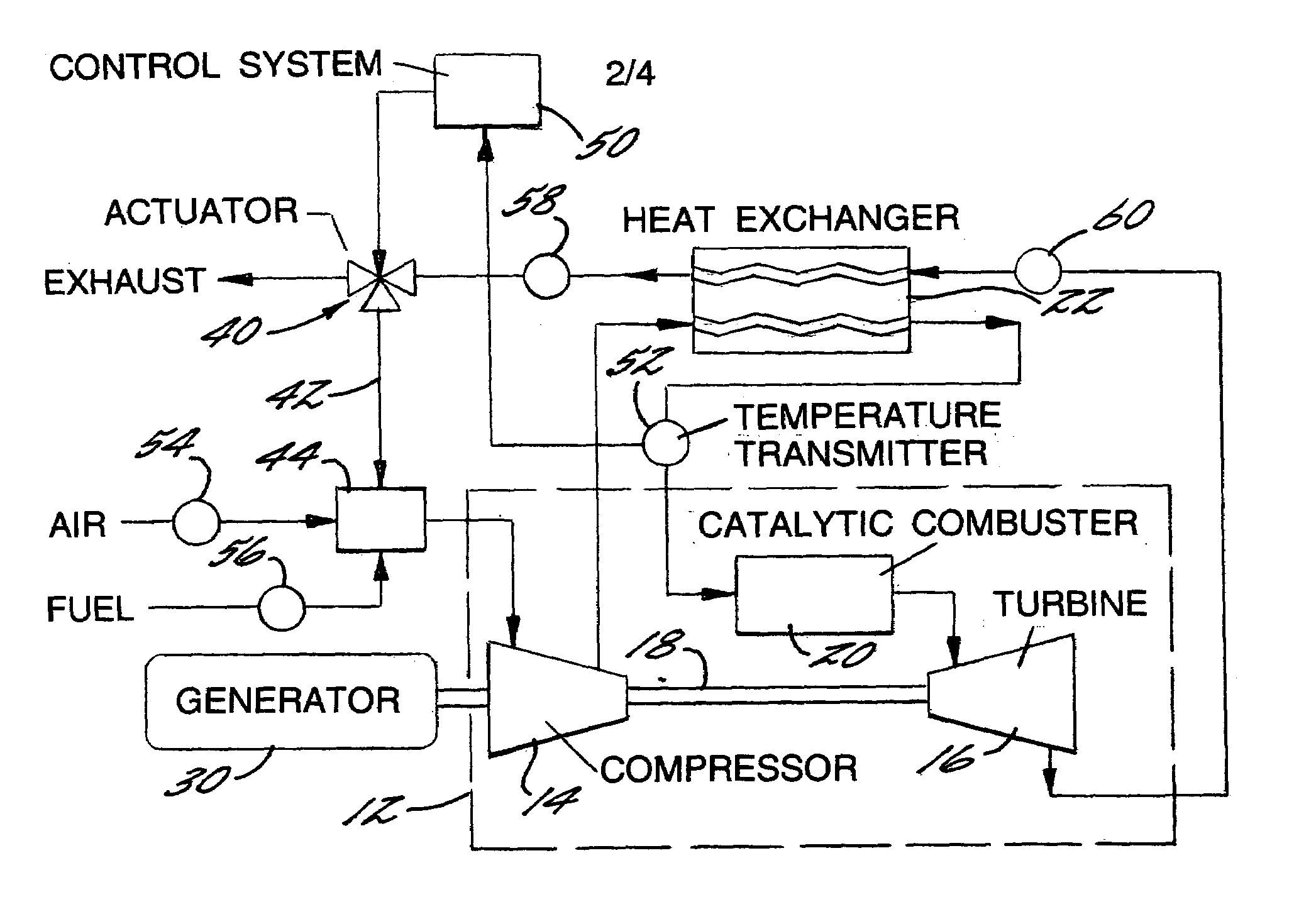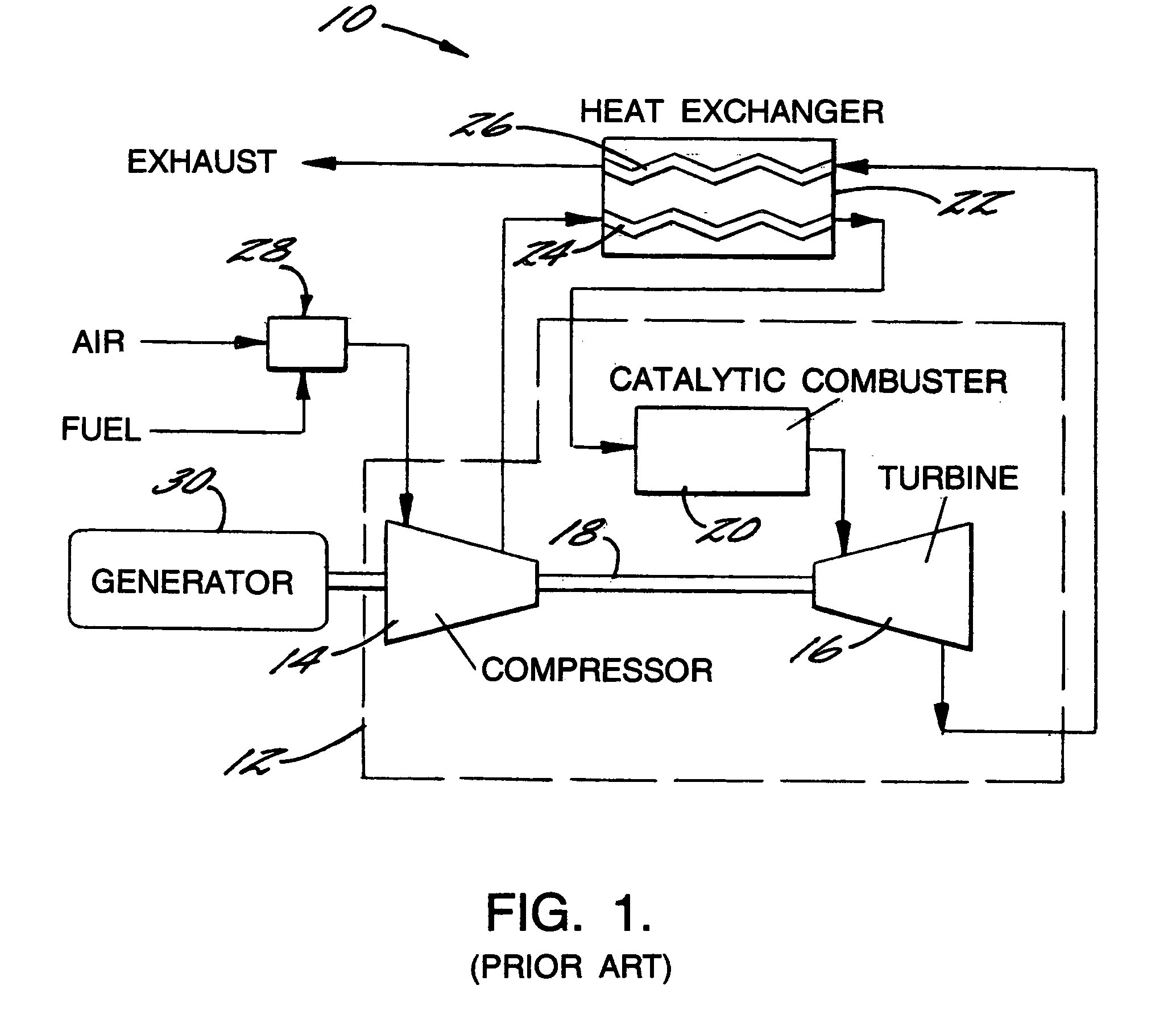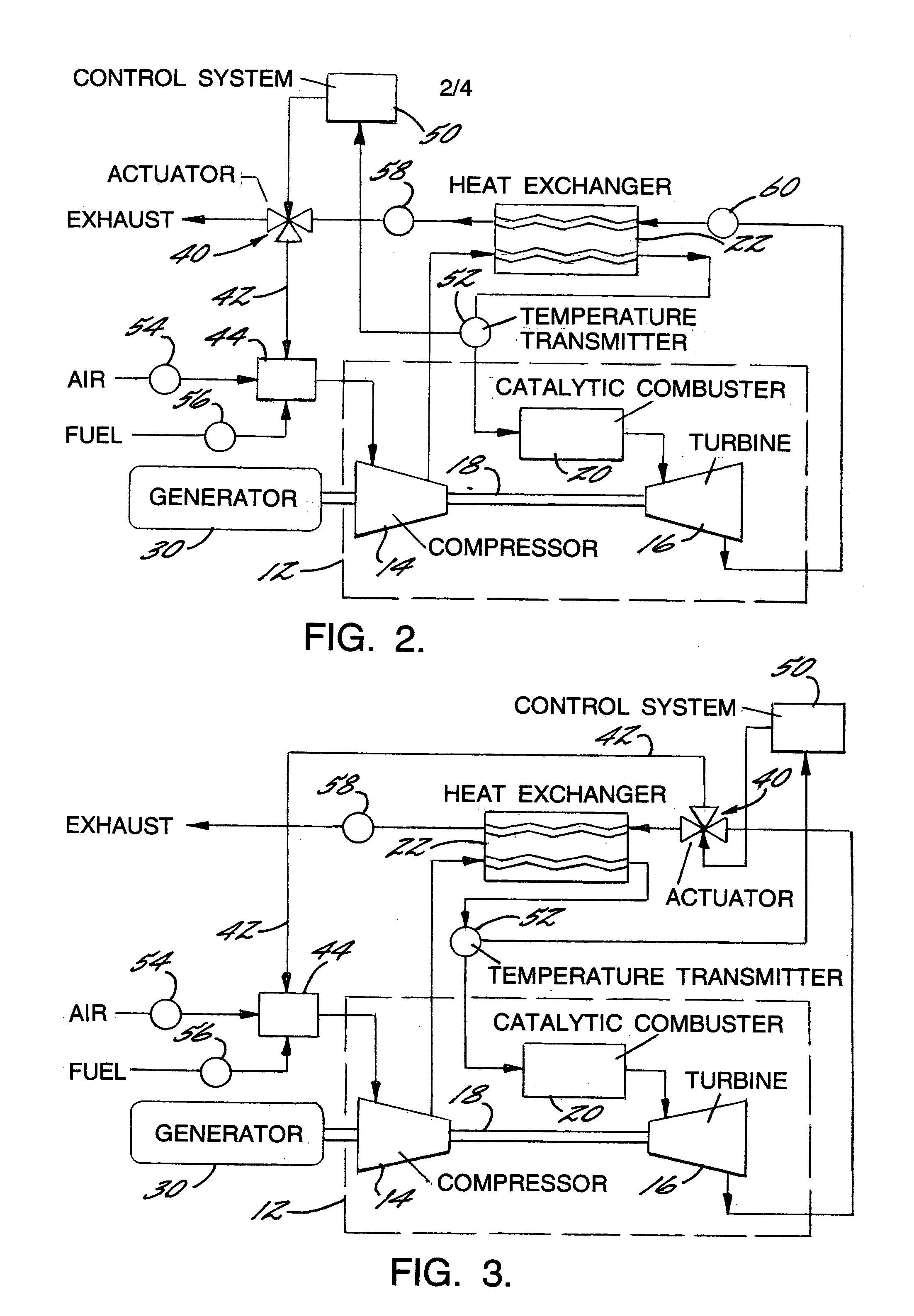Recuperated gas turbine engine system and method employing catalytic combustion
a gas turbine engine and catalytic combustion technology, which is applied in the ignition of turbine/propulsion engines, combustion control, combustion types, etc., can solve the problems of increasing the cost of the combustor, not being able to achieve less than one part per million, and not being able to achieve catalytic combustion, catalytic combustion, or catalytic combustion. or catalytic combustion. the effect of low level
- Summary
- Abstract
- Description
- Claims
- Application Information
AI Technical Summary
Benefits of technology
Problems solved by technology
Method used
Image
Examples
first embodiment
[0028]The present invention provides a gas turbine engine system and method that overcome this problem. FIG. 2 shows an electrical generator system driven by a turbine engine system in accordance with the invention. A generator 30 is driven by a turbine engine 12 having a compressor 14, turbine 16, shaft 18, and catalytic combustor 20 as previously described. A recuperator 22 is employed for pre-heating the air-fuel mixture before its introduction into the combustor, as previously described.
[0029]However, the combustor inlet temperature is regulated by the introduction of a portion of the turbine exhaust gas into the compressor. The exhaust gas has a substantially higher temperature than the ambient air entering the compressor, and therefore serves to boost the temperature of the fluid passing through the compressor, which in turn boosts the combustor inlet temperature.
[0030]Thus, the system includes an actuatable valve 40 disposed downstream of the recuperator 22 for diverting a po...
second embodiment
[0034]FIG. 3 shows the invention, generally similar to that of FIG. 2, except the valve 40 is located upstream of the recuperator 22 instead of downstream. The line 42 thus bypasses the recuperator, so the exhaust gas is not cooled in the recuperator before being recirculated. Because the temperature of the recirculated exhaust gas is higher, the relative proportion of exhaust gas that must be recirculated is lower than for the embodiment of FIG. 2, all other factors being equal. In other respects, the operation of this system is the same as that of FIG. 2.
[0035]The manner in which the exhaust gas is recirculated and mixed with the air and fuel can be varied in the practice of the invention. FIGS. 5A–C show several possibilities, although they are not exhaustive, and other variations can be used. All of these examples are based on the valve 40 being downstream of the recuperator 22, but they apply equally to systems in which the valve is upstream of the recuperator. In the embodimen...
PUM
 Login to View More
Login to View More Abstract
Description
Claims
Application Information
 Login to View More
Login to View More - R&D
- Intellectual Property
- Life Sciences
- Materials
- Tech Scout
- Unparalleled Data Quality
- Higher Quality Content
- 60% Fewer Hallucinations
Browse by: Latest US Patents, China's latest patents, Technical Efficacy Thesaurus, Application Domain, Technology Topic, Popular Technical Reports.
© 2025 PatSnap. All rights reserved.Legal|Privacy policy|Modern Slavery Act Transparency Statement|Sitemap|About US| Contact US: help@patsnap.com



